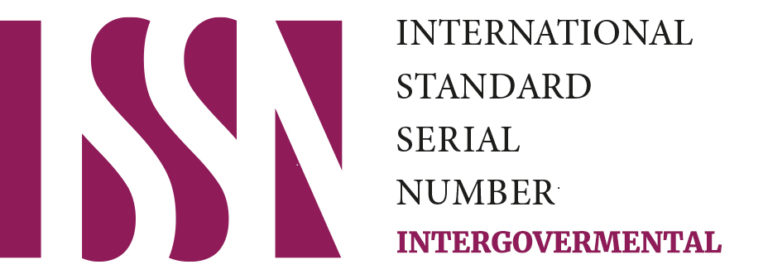ABSTRACT
| Many disputes depend on cultural barriers. Due to this, clear communication and effective resolution across the globe are impossible.
Religious leaders and diplomats must take part in effective mediation to enable the parties to resolve the dispute. Otherwise, if the resolution does not come forth, war is possible. This paper investigates the foundations and roots of cultures and how clear communication, and mediation skills can bring about peace and harmony. (1) This study considers the issue of feeling at risk when religious issues are involved. Therefore, specialists, leaders, and the influences of the communities play a vital role in resolving the issues, as many people across the globe will believe every word the leader says. (2) This study then considers the existing role of culture and the future with modern mediation values, bringing the mediation boundaries to a broader level of making peace and building society. (3) An added contribution to discussions and smooth communications will lead to a better understanding of the scope of negotiations in the Indian System, which can improve commercial and international disputes that need an amicable resolution. Overall, this research significantly contributes to studying Mediation And cultural barriers. It defines cultural differences, acceptance, religious interventions, and modern values and models, helping quick resolutions and better negotiation techniques between states. |
|
1. Introduction
Cultural and religious modern values in the international mediation system will completely mirror how these values play a significant role in developing negotiations between conflicting parties.
Culture is a complex concept encompassing many beliefs, values, attitudes, and behaviours. [1]
Culture and religion strongly affect the modern mediation system, as different countries, communities, and types of people have different beliefs and cultural values.
From the relevant international relationship, it is essential to note that communication is a multifaceted phenomenon that results from individual efforts to achieve their goals at the end of the negotiation. Both sides must send and receive clear messages to avoid confusion and misunderstanding. [2]
Indeed, as they are uncomfortable, familiar negotiators may not talk to each other, or at least not in an easily understood way. Frequently, most of the time, each side has given up on the other and cannot open a conversation. They are at a stage where they no longer try severe communication, so there is silence. Instead, they may talk merely to impress third parties or their constituency to convey their message. There can be instances when one speaks directly and there is miscommunication. Another major communication problem is misinterpretations and misunderstandings, which often arise when expectations of each other are unclear
Communication and active listening are critical factors for successful communication and play vital roles; therefore, interpersonal relationships based on receiving and accepting clear communications would amount to understanding the real problem solution, which would help the diplomats present their strategies for resolving disputes. [3].
2. Mediators and Diplomats with Cultural Values
The interpersonal relationship between the mediator and the diplomats is quite similar but also different, so one should not get confused between them; therefore, to understand the difference, one must see how each plays a role in conflict resolution.
The diplomat’s essential role is to stand for their state and work towards the welfare of their state or the intergovernmental institution they represent during negotiations with representatives of other states and intergovernmental organisations. They work towards conflict resolution as that is a core part of their work, which is critical as it helps them focus on improving relations and cooperation between their country or institution and other entities across the globe. Sometimes, state diplomats have a specific mandate towards mediation in an inevitable conflict. In such cases, the diplomat expands their focus from furthering the interests of their country exclusively, but they work in favour of all involved parties, acting as their mediator. [4].
Diplomats often play a dual role as mediators and diplomats, whereas a mediator is not necessarily a diplomat. Therefore, the interpersonal similarities of how they must be able to resolve their disputes if appointed as mediators must be well-skilled so that negotiating between the states for conflict resolution will be a success and not a disappointment or failure.
2.1. The Natural History of Negotiation and Mediation
It is inevitable, and every human being negotiates at some point in their life, on some matter or another, some more effectively than others. Negotiation happens when a person is a child, and as they grow, the nature of disputes has always existed throughout history. It is a known fact that disputes occurred within and between individuals, families, tribes, and communities in early human history. As needs increased, people wanted more from the community and each other.
Negotiation is always necessary for human survival in day-to-day life; moreover, in recent centuries, societies have become more socially, politically, technologically, and economically complex, and the need for negotiation has become more modernised due to increasing expectations and people’s unwillingness to compromise. Therefore, skilful negotiations are essential. [5].
2.2. The Open-Close Continuum
Interpersonal systems must play a vital role in keeping good international relationships. In such situations, good interpersonal relations-building skills must be present in a person who wants to negotiate. It brings connectivity in internal networks of people associated with families, work, social circles, etc. These systems are kept in part by commonly held expectations about proper behaviour. It is correct, as being too blunt and open can tense or even destroy the systems within which one interacts with other people. A restricted, limited version of “truth” can create significant levels of anxiety and can cause people in a system to become less able to carry out their goals. Stream of consciousness is a valid literary technique, but it can also be highly dysfunctional and negatively affect interpersonal relationships. [6].
It is essential that in international relationships and bonds to be maintained, it is critical how much one needs to open up in context to the state problems and how much one needs to restrict oneself to ensure that there is proper communication with the other side to avoid any further conflicts what but actually to resolve the ongoing conflicts.
3. The Interpersonal Contract in Mediating
Shrewd diplomats use their power through deception, manipulation, and hints of armed intervention to threaten the weaker ones.
It is tough to make changes at once and negotiate the inner process, as neither of these scenes readily applies to personal relationships. Many time-consuming efforts ensure that proper negotiations take place for conclusive benefits. Yet all relationships in negotiated agreements depend on explicitness, duration, and restrictiveness, though they are limited in nature. [7].
The interpersonal contract might be the main factor binding relationships that lead to the parties’ positive achievement. Good relations can conclude contracts, which will help maximise results as they lend predictability to interactions and provide the basis for trust. During this first significant move, the mediator usually engages with the parties and invites them to express their problems from their perspectives [8].
When there are major conflicts, it is essential to thoroughly understand the meaning of mediation and work transparently to settle the dispute throughout the process.
Clear communication has been essential to easing mediation through the third person’s intervention in favour of another for whom the representation is successful.[9].
Diplomats need to do vital pre-mediation preparation. It is essential to have solid foundations for a strong constructed building. On the other hand, it is about preparing for the mediation itself, particularly finding a mediator to resolve international disputes. Once mediation starts, it becomes more accessible for parties to act on their decisions.[10].
Indeed, the mediator has two ethical aims. It matters to them that the parties grasp the mediator’s authentic, ethical concern and use it to inspire and motivate their actions. [11]
4. THE PROBLEM OF POLITICALLY VIABLE ALTERNATIVES
For too many principal players, success in pursuing alternative means to solve immediate trade problems leads to acceptable second-best results, making it difficult for decision-makers to keep credibility in their claims that doing rounds was necessary. The consequences of failure could only be in terms that were professionally common rather than politically persuasive. [12]
4.1. Cultural and religious Aspects OF Resolving Disputes in India
Finding religion and culture in disputes when sensitive conflicts arise can be essential factors that can help resolve them at once. Consideration of religious dispute culture plays a vital role.
4.2. Impact of Culture on Dispute Resolution in India:
Culture dictates how one frames interactions, including disputes and how we resolve them. Parties approach disputes with different mindsets, informed by underlying cultural forces. Cultural fluency defines how parties communicate, frame conflicts and approach and understand different identities and roles.
All laws and lawmakers reflect the cultural ethos of the society. A traditional and conservative society has stricter norms and harsher penalties for violating them. In contrast, a more contemporary society has more relaxed standards and laws governing citizens’ lives. For instance, an outcry against excessive violence and sex in films leading to stricter censorship laws is just an expression of culture prevailing over the laws.
The Indian legal system has grown and evolved with the lives and aspirations of its diverse people and cultures. It is inspired and strengthened by age-old concepts and precepts of justice, equity, and good conscience, which are the hallmarks of common law.
The cultural dimensions of the law are essential for marginalised groups, as the law can act as a barrier to political and social inclusion or offer protection from discrimination. For example, the Indian legal system, through Articles 29 and 30 of the Constitution of India, protects cultural and educational rights.
The laws of India relating to matrimonial disputes emphasise the need, and indeed the duty, of the presiding judge to ensure that all avenues for reconciliation have been exhausted before granting a divorce. In India, culture is a family value reflected in matrimonial laws and litigation outcomes.
Culture directly affects a court’s ability to achieve legal ideals such as timeliness, access, fairness, and managerial effectiveness. Still, this empirical relationship does not presume that one culture is more desirable. Some cultures might come closer than others because judges and managers in some courts act to avoid the limitations associated with their present culture.
Although an individual’s culture does not necessarily decide the attitude and behaviour they will bring to the table, it can provide valuable guidelines for which negotiation strategies are likely to work and which are likely to fail.
Values composing a court’s culture shape the how, why, and when of decisions made by judges and the activities conducted by staff members. Because these individuals handle implementing policies and procedures, they are the key ingredients for ideas to take hold. For this reason, cultural values are more important to assess as indicators of the current situation than any other aspect of a court, such as structure, organisation, process, or resources.
Thus, a society’s culture, tradition, and values not only form the foundation of the laws that govern it but changes in values and traditions with time also influence and bring about fresh legislation reflecting the changed ethos of a society, underlining the ever-present link between culture and law [13].
4.3. Religious Interpreter
Get help from a religious interpreter or consultant. If necessary, the mediator can get help from a religious interpreter or consultant to ensure that the parties are fully understood and that the mediation process is culturally proper.
It is important to note that culture is just one factor that can affect mediation. Other factors, such as the parties’ personalities, the nature of the dispute, and the mediator’s skills and experience, can also play a role. However, mediators who are aware of the role of culture in mediation can be more effective in helping disputants from different religious backgrounds reach a mutually agreeable resolution.
Get help from a religious interpreter or consultant. If necessary, the mediator can get help from a religious interpreter or consultant to ensure that the parties are fully understood and that the mediation process is culturally appropriate.
It is important to note that religion is just one factor that can affect mediation. Other factors, such as the parties’ personalities, the nature of the dispute, and the mediator’s skills and experience, can also play a role. However, mediators aware of the role of culture and religion in mediation can be more effective in helping disputants from diverse cultural backgrounds reach a mutually agreeable resolution.
Humanity has made some progress in moving beyond national and cultural parochialism. Most school children today are exposed to some study of the arts and customs of other cultures and the denigration of different races. [14].
5. MODERN MEDIATION MODEL
Several modern approaches to mediation are in use today. The four main contemporary approaches are the ‘settlement,’ ‘facilitative,’ ‘transformative, ‘ and ‘evaluative’ models. Settlement mediation involves the mediator deciding the parties’ bottom lines and then persuading them to compromise. The transformative model focuses on therapeutic techniques to treat the relationship, even at the expense of no settlement. Evaluative mediation is a model focused on the parties’ legal rights. In this model, an evaluative mediator offers an opinion on how a judge might decide to help parties reach an agreement. The facilitative model involves a neutral mediator helping a dialogue between the parties. Of the four, the facilitative model may be the most deployed. It is the preferred approach in the US and is the model endorsed by Australia’s National Mediation Accreditation System. Therefore, it focuses on the facilitative model and proposes how mediation standards can appropriately calibrate it, where appropriate, to an Asian setting.
The facilitative model tries to shift parties from a rights-based approach to an interest-based approach. It is with clear intent for its hard-core focus on the parties’ needs and interests. The mediator takes a back-seat approach and merely acts as a facilitator of the proceedings. The mediator neither advises the parties nor recommends solutions. The focus is on self-determination; the parties must provide solutions to the disagreement. [15].
- Principles of mediating conflicts with religious dimensions
Recognising religious doctrines’ internal flexibility does not mean mediators work directly on such issues. Still, it does allow them to be aware of religion’s bridging potential in a negotiation process.
How a religion creates division or bridges differences is usually clarified through intra-faith dialogue within a religious community. Mediators from similar religious contexts can sometimes help as nonjudgmental dialogue partners and by sharing experiences. External mediators, however, can do little to support this intra-faith dialogue, yet they must be aware of its existence. [16].
6. ENCOURAGE CULTURE EXCHANGE IN COMMUNICATION
Communication and consultation with constituencies increase the chance that a settlement— even one that is disappointing in some respects— will be accepted as fair and supported by the public on both sides. The mediator should encourage negotiators to inform and consult their constituencies, learning from those what terms are acceptable and what will be unacceptable [17].
Effective communication and cultural exchange flow are vital in analysing the issues, reaching a settlement agreement, and developing peace between the parties.
Also, the psychological impact plays a vital role, while the modes of communication are the most potent factor, as listening is the most powerful factor. Unless the parties are well heard and express their disputes well, the resolution factors of reconciliation will not work.
6.1. Conflict, Self and Culture
The local society must handle resolving conflict, but several other actors are likely to be involved. Effective mediators devise different forms of engagement for other actors. Some actors will have a place at the table, and others will have observer status. Private and public consultations will occur in many different forms. Finding constructive forms of inclusion for different actors is a key part of an effective mediation strategy. [18].
Body language also plays a vital role in understanding what a person wants to convey. Therefore, to resolve the disputes, the mediators must enhance their techniques as facilitators and should not be rigid about the issue. They must focus on the body language pattern and the parties’ behavioural skills before them. [19].
The introduction to the mediation process typically emphasises voluntary attendance, willingness to act to resolve the dispute, and agreement to be guided by the mediators. These introductions emphasise mediator control over procedural issues and party control over substantive or content problems. Mediation draws confidentiality and assurances that mediators do not make value judgments, which serve (paradoxically) to assure participants that the mediation process is not biased and set up a basis for mediators to exercise power. [20].
Although typical facilitative mediation often does not explicitly engage with non-Western practices, parties sometimes use mediation sessions as a site to play out their patterns. In response to such experiences, mediators sometimes change standard mediation processes in recognition of non-Western ways of operating. [21].
Service providers must be aware that facilitative mediation practice embodies Western views of conflict and selfhood and affects an operation of power with significant political implications for mediation involving people of non-Western cultural backgrounds. Including such perspectives in mediation training programs would be a valuable antidote to the often-uncritical enthusiasm with which many recruits to the field adopt mediation. Mediators of non-Western backgrounds could play a continually active role in this process and the proposals. Moving beyond the need for increased awareness again requires caution. It would be presumptuous to address the issues raised so far by closely specifying the abilities, skills, and knowledge mediators should buy. However, a broad orientation to ease learning and several more specific possibilities that suggest areas for research, process development, and mediator training are possible. [22].
7. EMOTION AND CONFLICT
How people deal with their emotions varies from one culture to another. Still, if there is one statement that applies universally to all cultures, it is that strong feelings play a prominent role in conflicts. Knowing how to recognise strong emotions and respond constructively to them is thus a critical part of meditating. [23].
Emotion is vital in resolving many disputes, particularly matrimonial and commercial disputes. Parties must first settle with their feelings. Only they can gap out and resolve the dispute with an understanding of the practical approach to closing the entire conflict. For this, the mediator must be very evaluative of the person’s mindset and what they expect from the other side.
7.1. Transformation of Modern Values
When and how do the parties become transformative? They are transformative if they empower the respective parties and encourage them to buil relationships with others. Although good listening skills are essential in empowering the parties, they become fully transformative only to the extent they help in empowerment and relationship buildign. Listeing well to each party in seperate sessuibs takes a steo towards transformation because it is empowering, It reveals its potential when each party is also assisted in hearing and taking the other party’s persoectives serioiusly, The technique of pointing out commonalities can be understood as particularly transformative because, in one move, it simultaneously empowers each side and strengthens the relationship. [24].
8. CONCLUSION
In India, people of some communities are introspective and make peace with themselves and their elders’ decisions, practising total acceptance. Disrupting the homeostasis of the community and the individual(s) requires healing. Tribal pressure often forces individuals to consider the relational needs of the community greater than their own. Many of these dynamics and cultural sensitivities are difficult for the dominant culture to understand and accept, sometimes contradicting some of our defined ethics.
Reframing tries to understand each side’s feelings while considering the other side’s feelings and needs. [25].
In religious conflicts and cultural differences, transformative mediation can accommodate these differing values and process needs well. As people follow the parties rather than lead them, run from a non-directive, non-expert base, and practice nonjudgment toward how they work through their conflicts and solutions, parties can keep an open mind and respect the cultural and deeply held beliefs of those who come to the table.
REFERENCES AND BIBLIOGRAPHY
Benjamin, Robert. “The Natural History of Negotiation and Mediation: The Evolution of Negotiative Behaviors, Rituals, and Approaches (Article & Podcast).” Mediate.Com (blog), October 15, 2024. https://mediate.com/the-natural-history-of-negotiation-and-mediation-the-evolution-of-negotiative-behaviors-rituals-and-approaches/. Accessed July 14, 2024.
Brigg Morgan. “Mediation, Power, and Cultural Difference.” 287-306. https://www.nottingham.ac.uk/research/groups/ctccs/projects/translating-cultures/documents/journals/mediation-power-and-cultural-difference.pdf. Accessed April 18, 2025.
CSS ETH, Zurich, 2011. “Mediating Conflicts with Religious Dimensions”. No.105. https://www.files.ethz.ch/isn/135378/CSS-Analysis_105.pdf. Accessed April 12, 2025.
“Cultural Aspects with Regards to Resolving Disputes in India.” Accessed April 10, 2025. https://www.mondaq.com/india/arbitration-dispute-resolution/905952/cultural-aspects-with-regards-to-resolving-disputes-in-india.. Accessed April 04, 2025.
Dawson Roger, 2021. MCM-604 Coursepack: period 4, Secrets of Power Negotiating.25th Anniversary Edition. Career Press. https://euclid.egnyte.com/dl/nJ2pOdIn0T. Accessed July 02, 2024.
Daniel Erdmann. MCM 602 Coursepack: period 1, Anthological Correlation (Part-1): Mediation and Conflict Management. World Mediation Organization. 2021 https://euclid.egnyte.com/dl/2roFZWPvuZ. Accessed January 22, 2024.
Developer, Nitin. “The Role of Culture in Mediation.” International Mediation Campus (blog), October 16, 2023. https://im-campus.com/the-role-of-culture-in-mediation/.
Erich Pommer Institute. 2018.“The Harvard Principles of Negotiation.” E-Course, The Art of Negotiation. https://youtu.be/RfTalFEeKKE?si=y6DGLL-J-t_Xbk4a. Accessed June 13, 2024.
Fisher Roger, Ury William, Patton Bruce, 2010. MCM-604 Coursepack: period 2, Getting to Yes: Negotiating Agreement Without Giving In. Penguin Books.https://euclid.egnyte.com/dl/gC1ZzgnbZZhttps://euclid.egnyte.com/dl/gC1ZzgnbZZ. Accessed June 14, 2024.
Hampson Olser Fen and Hart Michael. 1999. DIP 502 Coursepack: period 5, ‘Multilateral Negotiations’, Lessons from Arms Control, Trade and the Environment, Paper Book Edition. Johns Hopkins University Press: Baltimore and London. https://euclid.egnyte.com/dl/Jknm38cjmv. Accessed February 6, 2024.
International Chamber of Commerce, 2023. “ICC Mediation Week: Finals, NY Law School vs Nalsar University of Law”. https://youtu.be/gFqDAn0Fups?si=s6rtFh7n2j5ly8kj. Accessed July 02, 2024.
Lemperuer, Salzer, Colson, Pekar, Kogan. 2021. MCM-604 Coursepack: period 1, Mediation: Negotiation by Other Moves.Wiley. https://euclid.egnyte.com/dl/N94OywqGeQ. Accessed June 12, 2024.
London Business School, 2021. “The Art of Negotiations: Six Must Strategies”.https://youtu.be/uKbcmlKb81c?si=h4MyWkqSsdfKwmuV. Accessed June 13, 2024.
Malhotra Deepak and Bazerman Max H, 2007. MCM-604 Coursepack: period 5, “Negotiation Genius”. A Bantam Book. https://euclid.egnyte.com/dl/Dhiq2Skwz. Accessed July 03, 2024.
Markhof-Maunter Frances. 1989. “Process of International Negotiations”. (Boulder, San Francisco and London: Westview Press). Accessed July 13, 2024.
Mediatedotcom, 2018. Melamed Jim. “Maximizing Mediation: An Experienced Mediators Favorite Techniques”. https://youtu.be/yXAbH9hu8Sk?si=dge0YkQ0Ka__ce76. Accessed July 02, 2024.
Murphy Mike, Marketwatch.com. November 13, 2017. “Trump Calls Kim Jong Un ‘Short and Fat,’ Then Offers his Mediation Skills for South China Sea dispute”. https://www.marketwatch.com/story/trump-insults-north-korean-leader-then-offers-to-mediate-south-china-sea-dispute-2017-11-12. Accessed July 23, 2024.
Noddings Nel. 2012. MCM-608 Coursepack: period 1, Peace and Education: How We Come to Love and Hate War.Cambridge University Press. https://euclid.egnyte.com/fl/OiqSjkNZHh#folder-link/MCM-608%20Peace%20Education/Period%201?p=1dbb2041-db28-4a25-9964-e87708c1e2ab. Accessed August 10, 2024.
Pfeiffer William J 1998. “Conditions that Hinder Effective Communication”. The Pfeiffer Library, Volume 6, 2nd Edition.
Smith Amy L. and Smock David 2008. Managing Mediation Process. United States Institute of Peace, Washington DC: Library of Congress-in-Cataloging-in-Publication-Data.
Talks at Google, 2016. Shapiro Dan. “Negotiating the Non-Negotiable”.https://youtu.be/xBu9aSR3q7A?si=vjC-8ISuXVCsyh-H. Accessed June 22, 2024.
Ury William, 2007. MCM-604 Coursepack: period 3, Getting Past No: Negotiating in Difficult Situation. Bantam Dell. https://euclid.egnyte.com/dl/tO7ic4GKn. Accessed June 20, 2024.
World Mediation Organization. Course Pack Anthological Correlation (Part-2).
Yang Kenny, 2017. “Towards Cross-Cultural Fluency in Mediation Standards”. University of Tasmania Law Review, Vol 36 No 1, 70-86. Benjamin Robert. September 6, 2012. “The Natural History of Negotiation and Mediation: The Evolution of Negotiating Behaviors, Rituals, and Approaches”. https://mediate.com/the-natural-history-of-negotiation-and-mediation-the-evolution-of-negotiative-behaviors-rituals-and-approaches/. Accessed July 14, 2024.
Brigg Morgan. “Mediation, Power, and Cultural Difference.” 287-306. https://www.nottingham.ac.uk/research/groups/ctccs/projects/translating-cultures/documents/journals/mediation-power-and-cultural-difference.pdf. Accessed April 18, 2025.
CSS ETH, Zurich, 2011. “Mediating Conflicts with Religious Dimensions”. No.105. https://www.files.ethz.ch/isn/135378/CSS-Analysis_105.pdf. Accessed April 12, 2025.
Dawson Roger, 2021. MCM-604 Coursepack: period 4, Secrets of Power Negotiating.25th Anniversary Edition. Career Press. https://euclid.egnyte.com/dl/nJ2pOdIn0T. Accessed July 02, 2024.
Daniel Erdmann. MCM 602 Coursepack: period 1, Anthological Correlation (Part-1): Mediation and Conflict Management. World Mediation Organization. 2021 https://euclid.egnyte.com/dl/2roFZWPvuZ. Accessed January 22, 2024.
Erich Pommer Institute. 2018.“The Harvard Principles of Negotiation.” E-Course, The Art of Negotiation. https://youtu.be/RfTalFEeKKE?si=y6DGLL-J-t_Xbk4a. Accessed June 13, 2024.
Fisher Roger, Ury William, Patton Bruce, 2010. MCM-604 Coursepack: period 2, Getting to Yes: Negotiating Agreement Without Giving In. Penguin Books.https://euclid.egnyte.com/dl/gC1ZzgnbZZhttps://euclid.egnyte.com/dl/gC1ZzgnbZZ. Accessed June 14, 2024.
Hampson Olser Fen and Hart Michael. 1999. DIP 502 Coursepack: period 5, ‘Multilateral Negotiations’, Lessons from Arms Control, Trade and the Environment, Paper Book Edition. Johns Hopkins University Press: Baltimore and London. https://euclid.egnyte.com/dl/Jknm38cjmv. Accessed February 6, 2024.
International Chamber of Commerce, 2023. “ICC Mediation Week: Finals, NY Law School vs Nalsar University of Law”. https://youtu.be/gFqDAn0Fups?si=s6rtFh7n2j5ly8kj. Accessed July 02, 2024.
International Mediation Campus. October 16, 2023. “Role of Culture in Mediation”. https://im-campus.com/the-role-of-culture-in-mediation/. Accessed April 05, 2025.
Kumar Anmol. March 25, 2020.“Cultural Aspects with Regards to Resolving Disputes in India”. Mondaq. https://www.mondaq.com/india/arbitration-dispute-resolution/905952/cultural-aspects-with-regards-to-resolving-disputes-in-india. Accessed April 04, 2025.
Lemperuer, Salzer, Colson, Pekar, Kogan. 2021. MCM-604 Coursepack: period 1, Mediation: Negotiation by Other Moves.Wiley. https://euclid.egnyte.com/dl/N94OywqGeQ. Accessed June 12, 2024.
London Business School, 2021. “The Art of Negotiations: Six Must-Have Strategies”.https://youtu.be/uKbcmlKb81c?si=h4MyWkqSsdfKwmuV. Accessed June 13, 2024.
Malhotra Deepak and Bazerman Max H, 2007. MCM-604 Coursepack: period 5, “Negotiation Genius”. A Bantam Book. https://euclid.egnyte.com/dl/Dhiq2Skwz. Accessed July 03, 2024.
Markhof-Maunter Frances. 1989. “Process of International Negotiations”. (Boulder, San Francisco and London: Westview Press). Accessed July 13, 2024.
Mediatedotcom, 2018. Melamed Jim. “Maximizing Mediation: An Experienced Mediators Favorite Techniques”. https://youtu.be/yXAbH9hu8Sk?si=dge0YkQ0Ka__ce76. Accessed July 02, 2024.
Murphy Mike, Marketwatch.com. November 13, 2017. “Trump Calls Kim Jong Un ‘Short and Fat,’ Then Offers his Mediation Skills for South China Sea dispute”. https://www.marketwatch.com/story/trump-insults-north-korean-leader-then-offers-to-mediate-south-china-sea-dispute-2017-11-12. Accessed July 23, 2024.
Noddings Nel. 2012. MCM-608 Coursepack: period 1, Peace and Education: How We Come to Love and Hate War.Cambridge University Press. https://euclid.egnyte.com/fl/OiqSjkNZHh#folder-link/MCM-608%20Peace%20Education/Period%201?p=1dbb2041-db28-4a25-9964-e87708c1e2ab. Accessed August 10, 2024.
Pfeiffer William J 1998. “Conditions that Hinder Effective Communication”. The Pfeiffer Library, Volume 6, 2nd Edition.
Smith Amy L. and Smock David 2008. Managing Mediation Process. United States Institute of Peace, Washington DC: Library of Congress-in-Cataloging-in-Publication-Data.
Talks at Google, 2016. Shapiro Dan. “Negotiating the Non-Negotiable”.https://youtu.be/xBu9aSR3q7A?si=vjC-8ISuXVCsyh-H. Accessed June 22, 2024.
“Uniting for Peace: The Convergence of Mediation and Diplomacy in Resolving Conflicts.” Accessed June 8, 2025. https://www.linkedin.com/pulse/uniting-peace-convergence-mediation-sgote. Accessed June 04, 2025
Ury William, 2007. MCM-604 Coursepack: period 3, Getting Past No: Negotiating in Difficult Situations. Bantam Dell. https://euclid.egnyte.com/dl/tO7ic4GKn. Accessed June 20, 2024.
World Mediation Organization. Course Pack Anthological Correlation (Part-2).
Yang Kenny, 2017. “Towards Cross-Cultural Fluency in Mediation Standards”. University of Tasmania Law Review, Vol 36 No 1, 70-86.
[1] Developer, “The Role of Culture in Mediation.” [2] Pfeiffer. “Conditions that Hinder Effective Communication”. (The Preiffer Library:1998), Volume 6, 2nd Edition. 1 [3] Fisher Roger, Ury William, Patton Bruce. MCM-604 Coursepack: period 2, Getting to Yes: Negotiating Agreement Without Giving In. (Penguin Books: 2010) 36. [4] “Uniting for Peace.” [5] Benjamin, “The Natural History of Negotiation and Mediation.” [6]Pfeiffer, Ibid,. 155. [7]Pfeiffer, Ibid,. 307. [8]Lemperuer, Salzer, Colson, Pekar, Kogan. MCM-604 Coursepack: period 1, Mediation: Negotiation by Other Moves. (Wiley:2021).134 [9] Lemperuer, Salzer, Colson, Pekar, Kogan 2021, Ibid, 21. [10] Lemperuer, Salzer, Colson, Pekar, Kogan 2021, Ibid ,. 80. [11]Lemperuer, Salzer, Colson, Pekar, Kogan 2021, Ibid ,. 219. [12] Hampson and Hart. 1999. DIP 502 Coursepack: period 5, ‘Multilateral Negotiations’, Lessons from Arms Control, Trade and the Environment, Paper Book Edition. (Johns Hopkins University Press: Baltimore and London, 250). [13] “Cultural Aspects with Regards to Resolving Disputes in India.” [14] Noddings. MCM-608 Coursepack: period 1, Peace and Education: How We Come to Love and Hate War.(Cambridge University Press:2012), 62. [15] Yang, 2017, Towards Cross-Cultural Fluency in Mediation Standards (University of Tasmania Law Review, Vol 36 No.1) 72-73. [16] CSS ETH, Zurich, 2011. Mediating Conflicts with Religious Dimensions. [17]Smith and Smock. Managing Mediation Process. (United States Institute of Peace, Washington, DC: Library of Congress-in-Cataloguing-in-Publication-Data, 2008), 46. [18]Smith and Smoke, 2008, Ibid., 11. [19]Smit and Smoke, 2008, Ibid.,11. [20]Brigg. Mediation, Power and Cultural Difference. 294. [21]Brigg, Ibid.29. [22]Brigg, Ibid.300. [23] World Mediation Organisation, Course Pack Anthological Correlation (Part-2). 363. [24]Erdmann. MCM 602 Coursepack: period 1, Anthological Correlation (Part 1): Mediation and Conflict Management. (World Mediation Organization:2021). 204 [25]Erdmann 2021,Ibid,.204.






